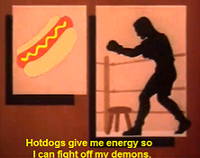Bark Beetle and Tree mortality rate
-
brian90620

- Posts: 123
- Joined: Sun Jan 27, 2008 8:34 pm
Went to the San Bernardino Mountians near Lake Arrowhead yesterday and noticed lots and lots of dead or dying trees. When I got home I looked this up online and apparantly all these drought stricken tree's are being attacked by bark beetles which is killing them. The tree mortality rate in the San Bernardino's is very high, according to some estimates as high as 90% (I heard this from a ranger). I have hiked many places in the San Gabriel's and never really noticed nearly as many dead trees. So I guess my question to you guys is does anyone happen to know if bark beetles and dying pine trees are a significant problem in the San Gabriel Mountians or is this problem more or less isolated to the San Bernardinos. 
-
Taco

- Snownado survivor
- Posts: 6136
- Joined: Thu Sep 27, 2007 4:35 pm
In Uppder Bear Creek, there were some downed trees that looked like they had been hit hard by pine borer beetles (really cool beetles, I must add. They hiss and tick at you, and are several inches long). Lots of pupae sticking up out of the holes, or perhaps just the shells. Very small though.
-
406

- Posts: 324
- Joined: Thu Jan 17, 2008 10:36 am
My slightly educated guess:
The San B's now get much less moisture, perhaps they are in a worse drought than the San G's. The beetle kills the tree when the tree can no longer make enough sap to drown the beetle because the tree doesn't have enough water. Also, horrific management practices by the forest service allows too much under growth, decreasing water for mature trees.
The San B's now get much less moisture, perhaps they are in a worse drought than the San G's. The beetle kills the tree when the tree can no longer make enough sap to drown the beetle because the tree doesn't have enough water. Also, horrific management practices by the forest service allows too much under growth, decreasing water for mature trees.
-
FIGHT ON
406, I think you got something there. They keep putting out the fires and letting the undergrowth GROW! For those who want to live in or near the forest, build a concrete house.
-
phydeux

- Posts: 58
- Joined: Thu Nov 22, 2007 5:52 pm
Drought conditions are one issue that's allowing the beetles to propagate. There's also been a lot of replanting from logging activites in the early 1900s that used a lot of the same trees (uniform monoculture helpes diseases and pests spread faster).
One thing that appears to limit them is altitude. If you're on the summit of San Gorgonio and look north down the South Fork drainage, you'll see the "brown" trees ending at about 9000 ft.; above that its fairly green, and u're walking among them at that altitude. Contrast this with the north side of Yucaipa Ridge as you're driving up Hwy 38 from Mentone to Forest Falls - the slope is almost completely filled with dead trees.
One thing that appears to limit them is altitude. If you're on the summit of San Gorgonio and look north down the South Fork drainage, you'll see the "brown" trees ending at about 9000 ft.; above that its fairly green, and u're walking among them at that altitude. Contrast this with the north side of Yucaipa Ridge as you're driving up Hwy 38 from Mentone to Forest Falls - the slope is almost completely filled with dead trees.
